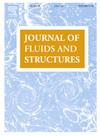Pore-scale numerical analysis of morphological characteristics and their influence on flow behavior in compressed virtual open-cell polyurethane foams
IF 3.5
2区 工程技术
Q1 ENGINEERING, MECHANICAL
引用次数: 0
Abstract
This study presents a numerical investigation integrating morphological characterization and flow response analysis within a porous medium subjected to uniaxial compression. Two modeling approaches are explored: periodic cell structures and Voronoï-based stochastic models. These approaches are analyzed within the framework of XPHD (eX-Poro-Hydro-Dynamic) lubrication, which aims to replace traditional lubricants in turbomachinery guide and support systems with a more efficient and environmentally friendly alternative to minimize energy losses. Identifying optimal materials for XPHD applications presents several challenges due to the continuous interaction between the imbibing fluid and the porous structure under dynamic compression, leading to complex mechanical behaviors. Within this context, the ANR SOFITT project preliminarily identified open-cell polyurethane foams as potential candidates due to their extensive range of physical properties. This study focuses on developing a modeling methodology for open-cell foam structures, aiming to replicate the geometry of polyurethane foams to predict fluid flow behavior under specific XPHD operating conditions. This approach facilitates the evaluation of morphological parameter variations and their impact on key properties necessary for selecting the optimal material. For morphological characterization, tomographic images of polyurethane foam samples subjected to different compression rates are analyzed using the digital volume correlation (DVC) method. The extracted morphological parameters serve as a foundation for generating virtual foams, combining CAD-based modeling with morphological data to create periodic and Voronoï-based structures. For flow modeling, numerical simulations conducted using OpenFOAM are compared with experimental data acquired in a preliminary study. The flow profiles and permeability measurements derived from simulations exhibit strong agreement with experimental observations. Further analysis establishes a correlation between foam internal morphology and fluid flow behavior. Voronoï-based foams demonstrate permeability and tortuosity values closer to those of real foams compared to periodic cell structures, a difference attributed to their respective internal morphologies—random versus periodic. Periodic cell models tend to overestimate permeability due to their uniform ligament configurations, which limit flow disturbances. Additionally, the study examines the deformation mechanisms of virtual foams and their correlation with modeling techniques to assess their suitability for deformation modeling. The Forchheimer coefficient is systematically lower in virtual foams than in real foams, highlighting the reduced inertial effects induced by the simplified numerical structures. The increasing discrepancy in with higher compression rates confirms the influence of structural simplifications on fluid flow response.
压缩虚拟开孔聚氨酯泡沫的孔隙尺度数值分析及其对流动特性的影响
本研究提出了一种结合单轴压缩多孔介质的形态表征和流动响应分析的数值研究。探索了两种建模方法:周期细胞结构和Voronoï-based随机模型。这些方法在XPHD (ex - poro - hydrodynamic)润滑的框架内进行了分析,XPHD旨在用更高效、更环保的替代品取代涡轮机械导向和支撑系统中的传统润滑剂,以最大限度地减少能量损失。由于在动态压缩下,流体与多孔结构之间不断相互作用,导致复杂的力学行为,因此确定XPHD应用的最佳材料面临着一些挑战。在此背景下,ANR SOFITT项目初步确定了开孔聚氨酯泡沫作为潜在的候选材料,因为它们具有广泛的物理性质。本研究的重点是开发一种开孔泡沫结构的建模方法,旨在复制聚氨酯泡沫的几何形状,以预测特定XPHD操作条件下的流体流动行为。这种方法有助于评估形态参数变化及其对选择最佳材料所需的关键性能的影响。为了形态学表征,采用数字体积相关(DVC)方法分析了不同压缩率下聚氨酯泡沫样品的层析图像。提取的形态参数作为生成虚拟泡沫的基础,将基于cad的建模与形态数据相结合,创建周期性和Voronoï-based结构。在流动建模方面,利用OpenFOAM软件进行了数值模拟,并与初步研究的实验数据进行了比较。模拟得到的流动剖面和渗透率测量结果与实验观测结果非常吻合。进一步的分析建立了泡沫内部形态与流体流动行为之间的相关性。与周期性细胞结构相比,Voronoï-based泡沫的渗透性和扭曲度值更接近于真实泡沫,这一差异归因于它们各自的内部形态——随机与周期性。周期细胞模型往往高估渗透率由于其均匀的韧带结构,这限制了流动干扰。此外,该研究还考察了虚拟泡沫的变形机制及其与建模技术的相关性,以评估其变形建模的适用性。虚拟泡沫中的Forchheimer系数Cf比真实泡沫中的Forchheimer系数Cf更低,这表明简化的数值结构减少了惯性效应。压缩率越高,Cf差异越大,证实了结构简化对流体流动响应的影响。
本文章由计算机程序翻译,如有差异,请以英文原文为准。
求助全文
约1分钟内获得全文
求助全文
来源期刊

Journal of Fluids and Structures
工程技术-工程:机械
CiteScore
6.90
自引率
8.30%
发文量
173
审稿时长
65 days
期刊介绍:
The Journal of Fluids and Structures serves as a focal point and a forum for the exchange of ideas, for the many kinds of specialists and practitioners concerned with fluid–structure interactions and the dynamics of systems related thereto, in any field. One of its aims is to foster the cross–fertilization of ideas, methods and techniques in the various disciplines involved.
The journal publishes papers that present original and significant contributions on all aspects of the mechanical interactions between fluids and solids, regardless of scale.
 求助内容:
求助内容: 应助结果提醒方式:
应助结果提醒方式:


